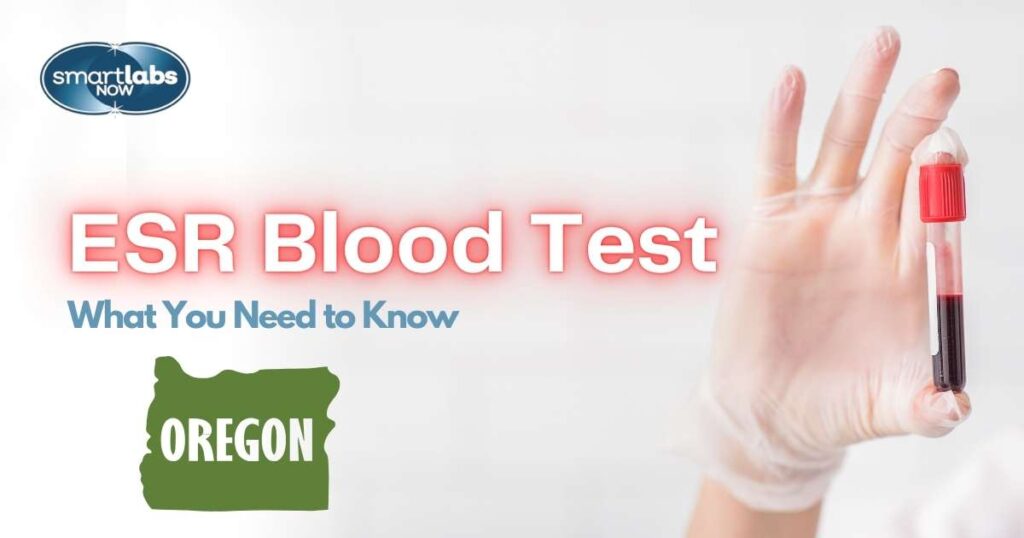
The ESR (Erythrocyte Sedimentation Rate) blood test is a reliable tool for detecting inflammation and monitoring various health conditions.
At Smart Labs Now, we specialize in providing fast, accurate, and affordable ESR testing in Portland, Oregon.
Whether you prefer visiting our lab or scheduling on-site testing at your address, we ensure a seamless experience 🙂.
BOOK NOW to prioritize your health with our gentle and professional testing services.

The ESR test measures how quickly red blood cells settle at the bottom of a tall, thin tube filled with blood.
This speed, known as the sedimentation rate, can indicate inflammation or other health conditions.
A 2010 study published in the Journal of Pre-Clinical and Clinical Research explores the benefits of ESR’s utility in indicating inflammation, infection, trauma, or malignant disease.
Useful for tracking autoimmune diseases like systemic vasculitis or monitoring the effectiveness of treatment.
Identifies inflammatory conditions such as rheumatoid arthritis or lupus.
Often performed alongside a C-reactive protein (CRP) test, complete blood count (CBC), or comprehensive metabolic panel.
Helps diagnose polycythemia or sickle cell disease.
Detects markers of active disease processes.
Uses techniques such as the Westergren method for precision.
By understanding your sedimentation rate, healthcare providers can better evaluate underlying conditions and track their progression.
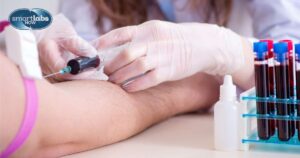
Preparation for an erythrocyte sedimentation rate (ESR) test is straightforward but crucial to ensure accurate and reliable results.
Following the recommended steps minimizes variability and enhances the efficiency of the testing process.
This Cleveland Clinic’s resource highlights the need for patients to inform their healthcare providers about any medications or supplements they are taking.
A few easy steps can make the consultation process a lot easier, here’s what you need to follow:
Select a time that fits conveniently into your schedule to avoid unnecessary stress or interruptions.
Many laboratories offer early morning slots, which can be particularly useful if fasting is required for concurrent tests.
Ensure that the test is scheduled at a certified laboratory with a strong reputation for accuracy and reliability, such as a CLIA-approved lab.
Some medications can interfere with ESR results.
These include anti-inflammatory drugs, which may suppress signs of inflammation, or certain antibiotics and anticoagulants.
While fasting is not generally required for an ESR test, it might be recommended if combined with other blood tests like a comprehensive metabolic panel (CMP) or a complete blood count (CBC).
If fasting is necessary, refrain from eating or drinking (except water) for 8–12 hours before your appointment.
Stay hydrated with water to make the blood draw process smoother and more comfortable.
For children, preparation involves more psychological readiness than physiological steps:
It’s generally advised to wear loose, comfortable clothing that allows easy access to the arm for the blood draw.
Arrive at the testing center a few minutes early to complete any necessary paperwork and to relax before the procedure.
If you feel anxious about blood draws, practice relaxation techniques like deep breathing to stay calm.
By taking these steps, you can ensure a smoother testing experience and accurate ESR test results.
Proper preparation not only makes the process more comfortable but also eliminates potential errors or variability in your test outcomes.

The ESR test is simple, quick, and minimally invasive. Here’s what to expect:
The 2023 article details the test procedure, including the collection of a blood sample and the measurement of the rate at which red blood cells settle in a test tube.
The test itself only takes a few minutes, with results available promptly.
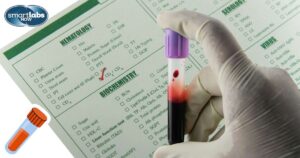
Accurate results in Erythrocyte Sedimentation Rate (ESR) testing rely heavily on proper specimen collection and handling.
Inconsistent practices during these stages can lead to errors, impacting patient care.
This guide explains the best practices, equipment, and requirements for collecting and managing blood specimens for ESR testing.
The 2019 study published in the Journal of Clinical Laboratory Analysis, discusses the importance of proper specimen collection and handling to ensure accurate ESR results.
The most common collection method for ESR testing uses a lavender-top tube (EDTA).
This tube contains the anticoagulant ethylenediaminetetraacetic acid (EDTA), which prevents blood from clotting during analysis.
Alternatively, a sodium citrate ESR tube may also be used in certain clinical settings, especially with automated ESR analyzers.
For reliable results, the preferred volume of blood collected is typically 4 mL.
However, some labs accept a minimum volume of 2 mL, provided the test tube’s anticoagulant-to-blood ratio is maintained. Insufficient sample volumes can skew results.
ESR testing requires whole blood, not serum or plasma.
It is essential to gently mix the sample by inverting the tube 8–10 times immediately after collection to distribute the anticoagulant evenly.
Proper handling and storage are vital to preserve the specimen’s integrity and prevent degradation that can affect the ESR results.
Below are the critical guidelines:
When transporting samples, ensure they remain at room temperature or within the refrigerated range.
Extreme temperatures can lead to hemolysis or false readings.
Laboratories enforce strict rejection criteria to avoid compromised results.
Samples that fail to meet these standards are discarded, and recollection is required. Common rejection criteria include:
Certain situations require extra precautions to ensure accurate ESR testing:
If cold agglutinins are suspected, keep the specimen at 37°C during collection, storage, and transport. This prevents agglutination, which could interfere with sedimentation rates.
These can lead to incorrect anticoagulant-to-blood ratios, causing errors in ESR measurement.
It is always wise to be aware of the best practices while being tested, the best ones of which are mentioned below.

The ESR test measures how quickly red blood cells settle at the bottom of a blood sample tube, expressed in millimeters per hour (mm/hr).
This Cleveland Clinic’s resource also discusses normal ESR ranges, highlighting that values can differ depending on the individual’s age and gender.
Normal ESR levels can vary depending on the tested person’s age and gender:
Typically, the normal range is between 0 and 15 mm/hour.
The range increases slightly, with values between 0 and 20 mm/hour considered normal.
Normal levels range from 0 to 20 mm/hour.
Like men, the range shifts higher, typically 0 to 30 mm/hour.
Factors such as the specimen’s age and lab-specific reference ranges may also influence results. It’s important for labs to account for these variables to ensure accuracy.
Healthcare providers interpret the ESR level in the broader context of the patient’s symptoms, health history, and other diagnostic tests.
The ESR test results, measured in millimeters per hour (mm/hr), indicate the degree of inflammation in your body. Here’s how to interpret them:
The 2023 article from StatPearls explains that while an elevated ESR indicates the presence of inflammation, it is not specific to any particular disease and should be interpreted in conjunction with other clinical findings.
Vary by age and sex, with higher rates common in older adults and females.
May indicate inflammation, autoimmune diseases, kidney disease, or blood disorders.
Could suggest polycythemia or certain red blood cell abnormalities.
Often analyzed alongside tests like CRP or antineutrophil cytoplasmic antibodies to provide a more comprehensive diagnosis.
Understanding the sedimentation rate in context with your health history is crucial for accurate diagnosis and management.
The ESR test can be conducted using different methods, each designed to provide reliable measurements of sedimentation rates. These methods include:
The most commonly used technique, this method employs a Westergren-Katz tube. A blood sample is mixed with an anticoagulant and placed in the tube, where the sedimentation rate is measured over one hour.
Variations of the Westergren method improve accuracy and adapt the test to specific laboratory settings.
This method uses a smaller tube than the Westergren method. While less sensitive to minor changes, it is effective in certain diagnostic contexts.
Both methods rely on specialized tubes to ensure accurate measurements of the sedimentation rate.
The rate is determined by observing how far red blood cells settle from the plasma in millimeters within the designated time frame.
Although effective in detecting inflammation, the ESR test does not pinpoint the exact cause and is typically paired with other diagnostics.
These methodologies allow healthcare providers to choose the most suitable technique based on the clinical context.

The Erythrocyte Sedimentation Rate (ESR) test is a widely used diagnostic tool for detecting and monitoring inflammation, as well as assessing various health conditions.
ESR testing provides valuable insights that guide clinicians in the diagnosis, management, and treatment of diseases.
This test has been especially useful in diagnosing conditions that cause inflammation, including autoimmune diseases, infections, and certain types of cancers.
In this section, we’ll delve into the specific diagnostic applications of ESR testing, how it works in conjunction with other tests, and its role in clinical decision-making.
ESR testing measures how quickly red blood cells (erythrocytes) settle at the bottom of a test tube filled with blood.
The rate at which this sedimentation occurs is known as the erythrocyte sedimentation rate.
The speed of this process is influenced by the presence of proteins in the plasma that are released during inflammatory responses.
A faster sedimentation rate typically indicates inflammation in the body.
In clinical practice, ESR testing is often used as an add-on test to complement other diagnostics.
While ESR alone may suggest the presence of inflammation, it cannot pinpoint the exact cause.
Adding ESR to a comprehensive diagnostic panel provides more clarity, especially when inflammation is part of a broader set of symptoms.
Plasma cell dyscrasias refer to a group of disorders where plasma cells (a type of white blood cell) become dysfunctional.
This includes diseases like multiple myeloma, Waldenström’s macroglobulinemia, and monoclonal gammopathy.
Another important test used in conjunction with ESR is serum-free light chains (FLC) testing.
Serum FLC measures the amount of light chains (part of antibodies) circulating in the blood. These tests are critical for diagnosing and managing conditions like multiple myeloma.
ESR testing is an essential part of clinical diagnosis, offering highly valuable clinical detail about a patient’s condition.
ESR, however, should not be used as a sole diagnostic tool. Elevated ESR levels typically indicate the presence of inflammation, but they do not specify the underlying cause.
Elevated ESR can point to many conditions, ranging from infections to autoimmune diseases, and even cancer. It is non-specific, meaning it does not directly diagnose a disease.
For example, rheumatoid arthritis and lupus both cause high ESR readings, but the diseases are very different and require additional tests to confirm.
For a comprehensive understanding of the inflammation, ESR is frequently ordered alongside other tests, like the C-reactive protein (CRP) test.
CRP provides a more rapid response to inflammation, while ESR reflects chronicity or long-term inflammation. Together, they offer critical insight into the type, duration, and intensity of inflammatory processes.
In cases where the cause of symptoms remains unclear, ESR can be an invaluable tool for identifying undiagnosed conditions.
When a patient presents with vague or unexplained symptoms like fatigue, weight loss, fever, or pain, an elevated ESR reading often signals that further investigation is necessary.
If the ESR is elevated, healthcare providers may order additional tests, such as:
By acting as a flag for inflammation, ESR testing can help clinicians steer the diagnostic process, focusing attention on conditions that warrant further testing.

The stability of a blood specimen plays a critical role in the accuracy and reliability of Erythrocyte Sedimentation Rate (ESR) testing.
Any deviation from optimal storage or handling conditions can impact the sedimentation rate, potentially leading to incorrect diagnoses.
This article explores the guidelines, conditions, and key factors that affect blood specimen stability for ESR tests.
Specimen stability refers to the period during which a collected sample remains viable for accurate testing.
This timeframe depends on various factors like storage conditions, transport methods, and the type of test being performed, to name a few.
For ESR testing, stability is particularly sensitive to temperature and time.
The sed rate measures how quickly red blood cells settle in a tube of whole blood.
This rate can be influenced by environmental factors.
An unstable specimen can lead to false readings, affecting the diagnosis of inflammation or other medical conditions.
Whole blood specimens for ESR testing are stable at room temperature (20–25°C) for up to 4 hours after collection.
During this period, the sedimentation rate remains unaffected by significant changes in the blood’s properties.
If fresh blood samples can’t be tested within 4 hours, refrigerating the sample at 2–8°C can extend its stability up to 24 hours.
This is common for samples transported from remote locations or when lab processing is delayed.
Frozen whole blood specimens are not usually recommended for ESR testing. The formation of ice crystals can damage red blood cells, rendering the sample unusable.
Room Temperature Stability: 4 hours after collection.
Refrigerated Stability: 24 hours if stored at 2–8°C.
Whole Blood Required: ESR tests cannot be performed on clotted or hemolyzed samples, emphasizing the need for proper handling.
No Freezing: Freezing destroys red blood cells and invalidates test results.
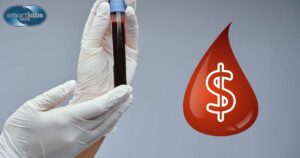
The Erythrocyte Sedimentation Rate (ESR) test is in general a widely used diagnostic tool for detecting inflammation and monitoring various health conditions.
While the procedure is relatively simple, the cost of the ESR test can vary depending on factors like location, service provider, and testing method.
This article breaks down the pricing structure and highlights key considerations for patients.
The cost of an ESR test typically ranges from $10* to $50* in most regions.
However, these prices can fluctuate based on the type of healthcare facility, diagnostic method (manual vs. automated), and additional services provided. (Note: (*) signifies that the prices may be subject to change).
Several elements contribute to variations in the cost of ESR testing:
Many diagnostic centers provide promotional discounts or offer bundled packages that include ESR testing along with other routine blood tests.
Local healthcare initiatives or government programs in certain regions may subsidize the cost of ESR testing, making it accessible to low-income populations.
Patients should compare prices across multiple labs and review online ratings to ensure they receive quality testing at a reasonable cost.
The ESR test plays a vital role in identifying inflammation, diagnosing autoimmune diseases, and monitoring chronic conditions.
While cost considerations are important, choosing a reliable pathology lab is crucial for accurate results.
Tests performed at accredited centers ensure proper handling of samples and accurate reporting, minimizing the risk of misdiagnosis.
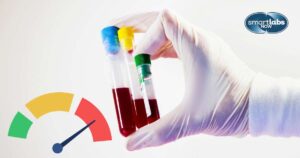
While the ESR test is generally safe, certain factors may influence results:
Normal ranges vary, with elevated ESR more common in older adults and women.
Conditions like obesity, pregnancy, or the menstrual cycle can affect sedimentation rates.
Anti-inflammatory drugs or supplements may alter results.
Alcohol consumption and exercise can impact ESR levels.
Always interpret results in the context of your health history.
By Consulting a healthcare provider you can ensure results that are accurately understood and effectively utilized.
For further details on ESR testing and its applications, explore these trusted resources:
These resources provide valuable information for understanding and accessing ESR testing services.

At Smart Labs Now, we’ve integrated ESR testing into our CBC blood test panel to offer a complete view of your health.
With our quick and secure booking process, maintaining your health metrics has never been easier.
BOOK NOW to experience fast, accurate, and affordable testing in Portland, Oregon.
Let’s keep your health on track together!
DISCLAIMER:
Please consult your primary care physician before engaging with any pharmaceutical, natural substances, or activity regimens mentioned or prescribed in this post. Smart Labs Now is not responsible for health or life outcomes based on the information or recommendations provided. This account does not serve as a substitute for professional medical advice/help.